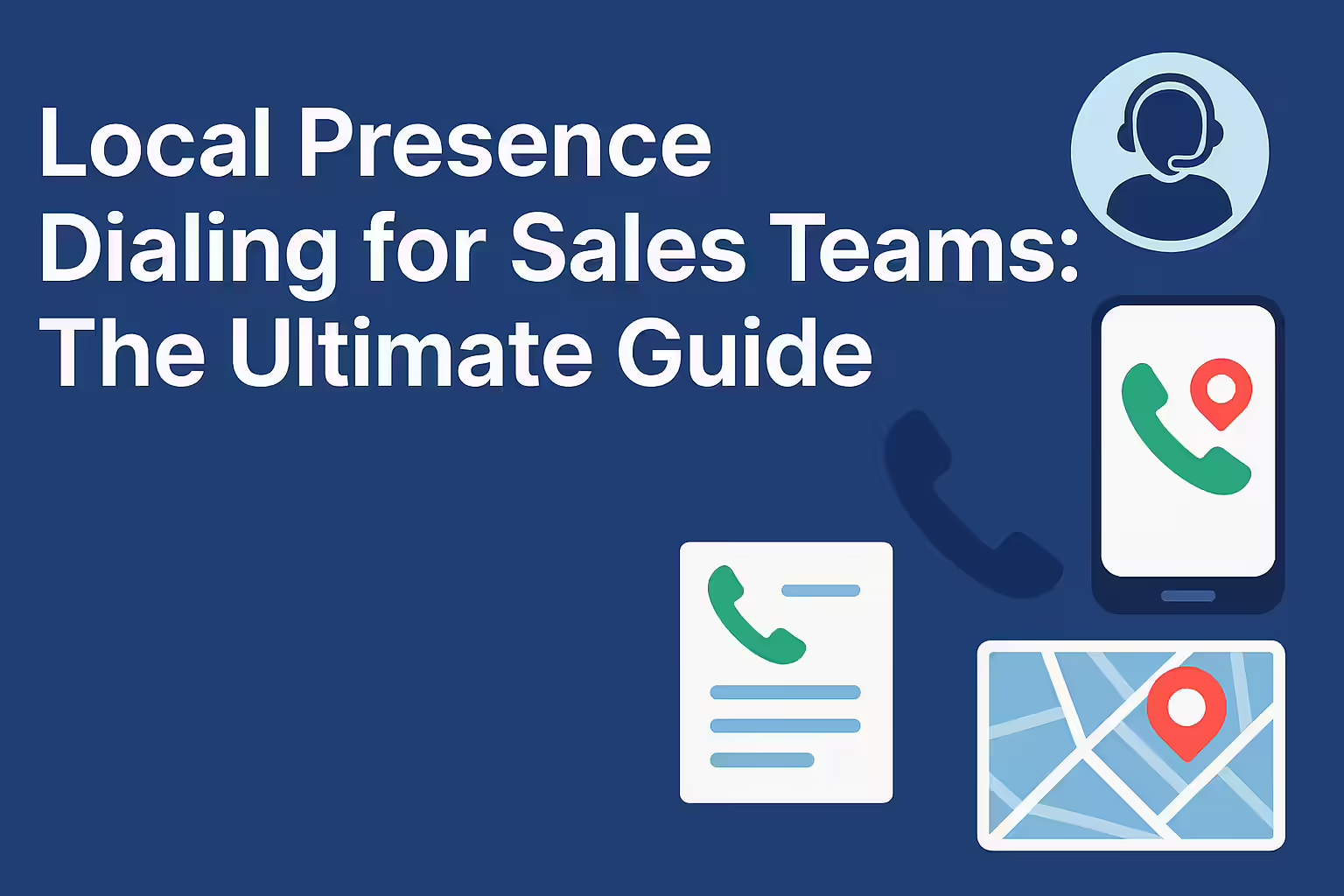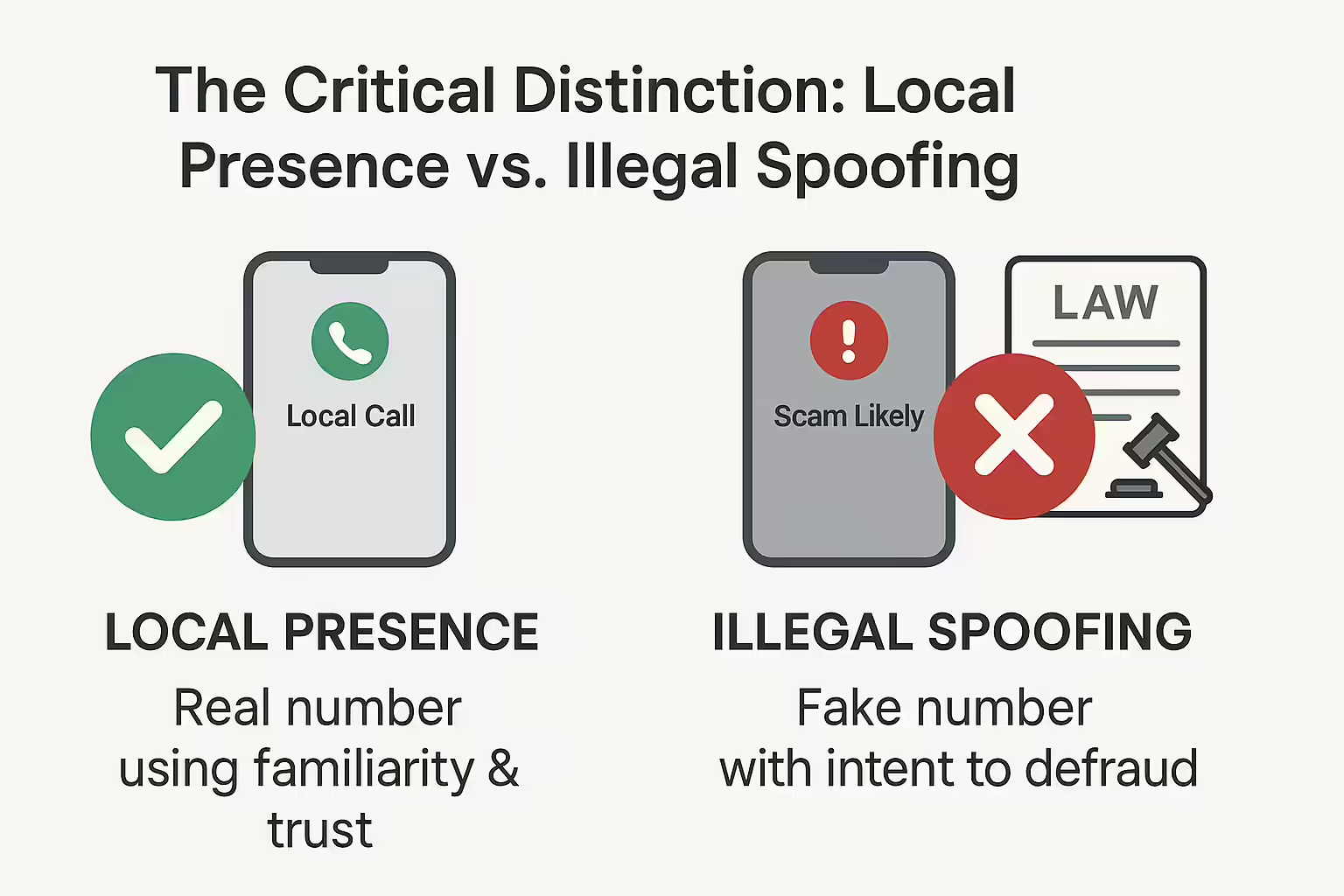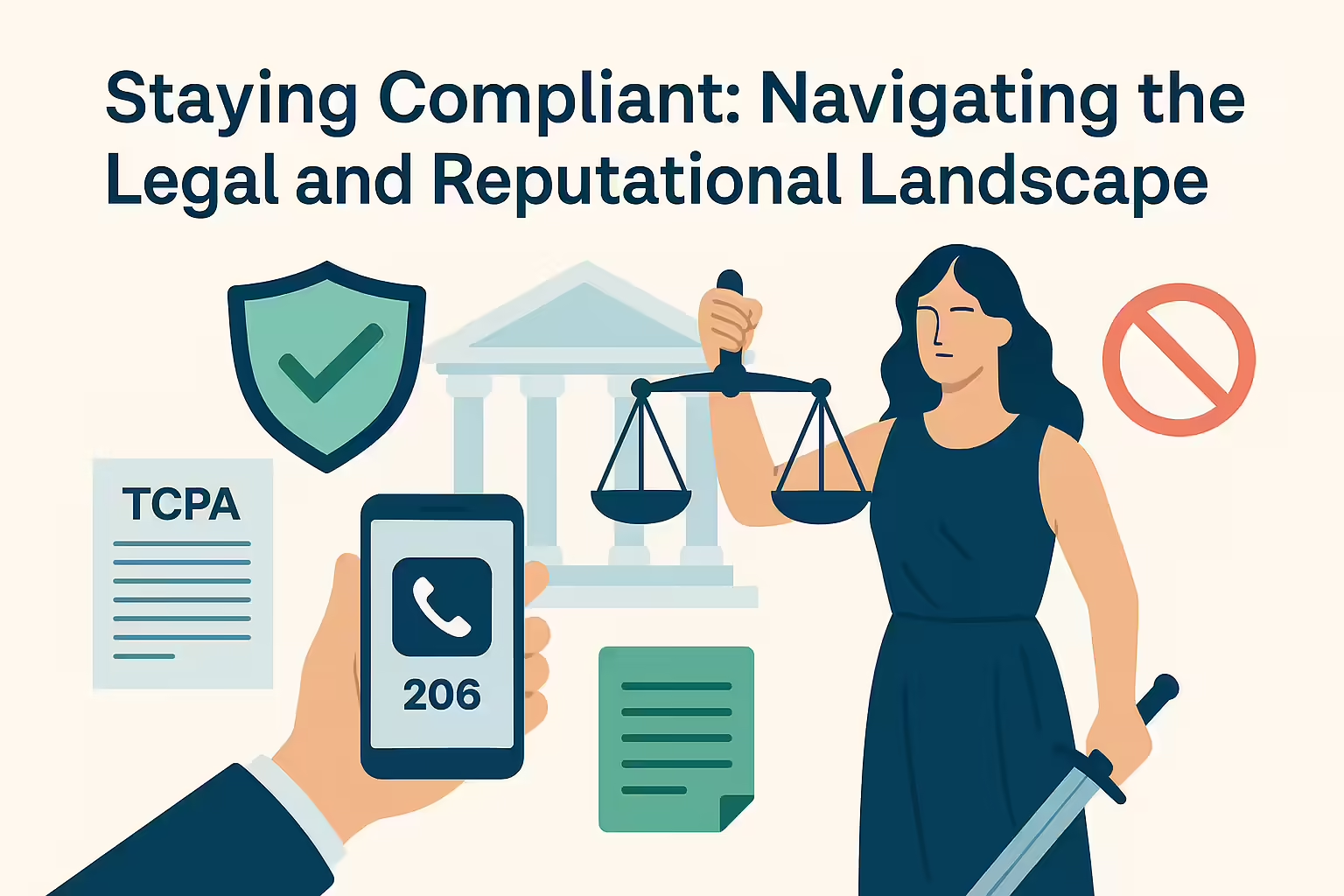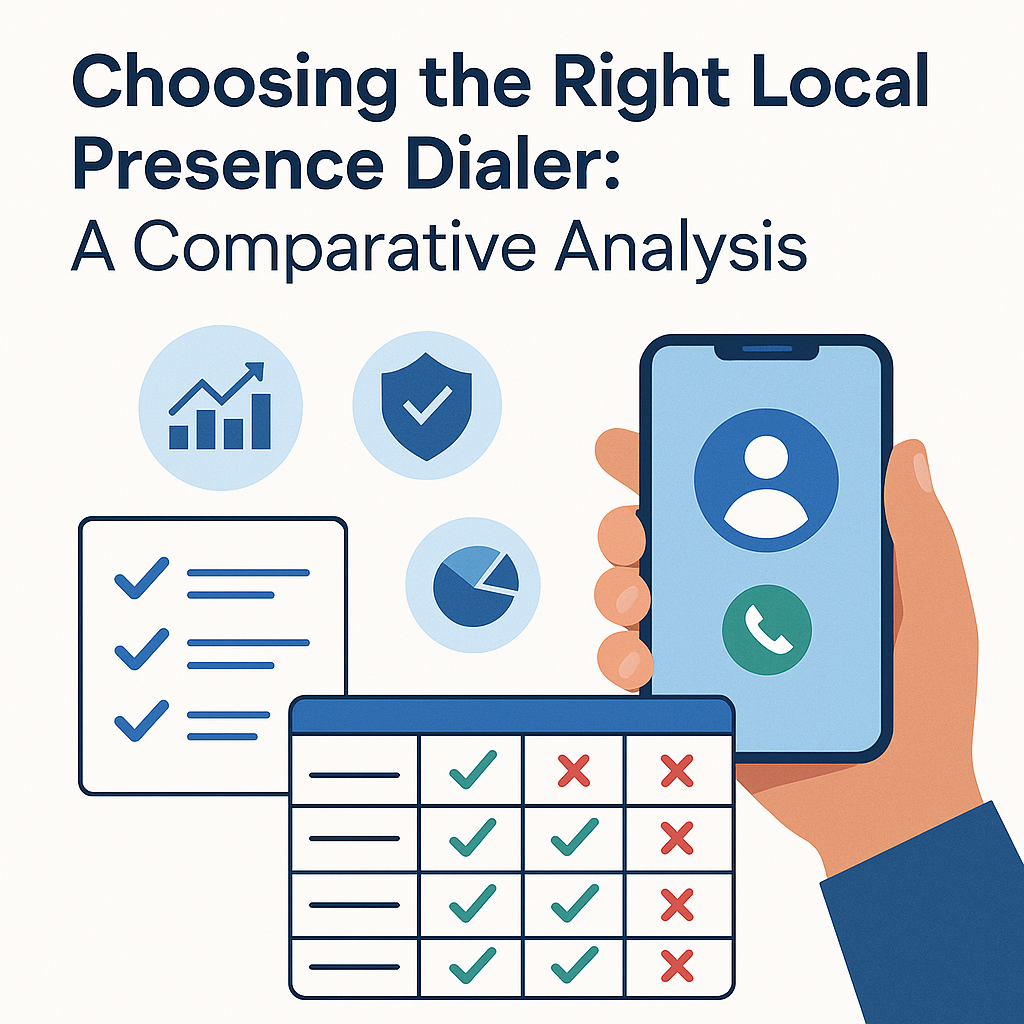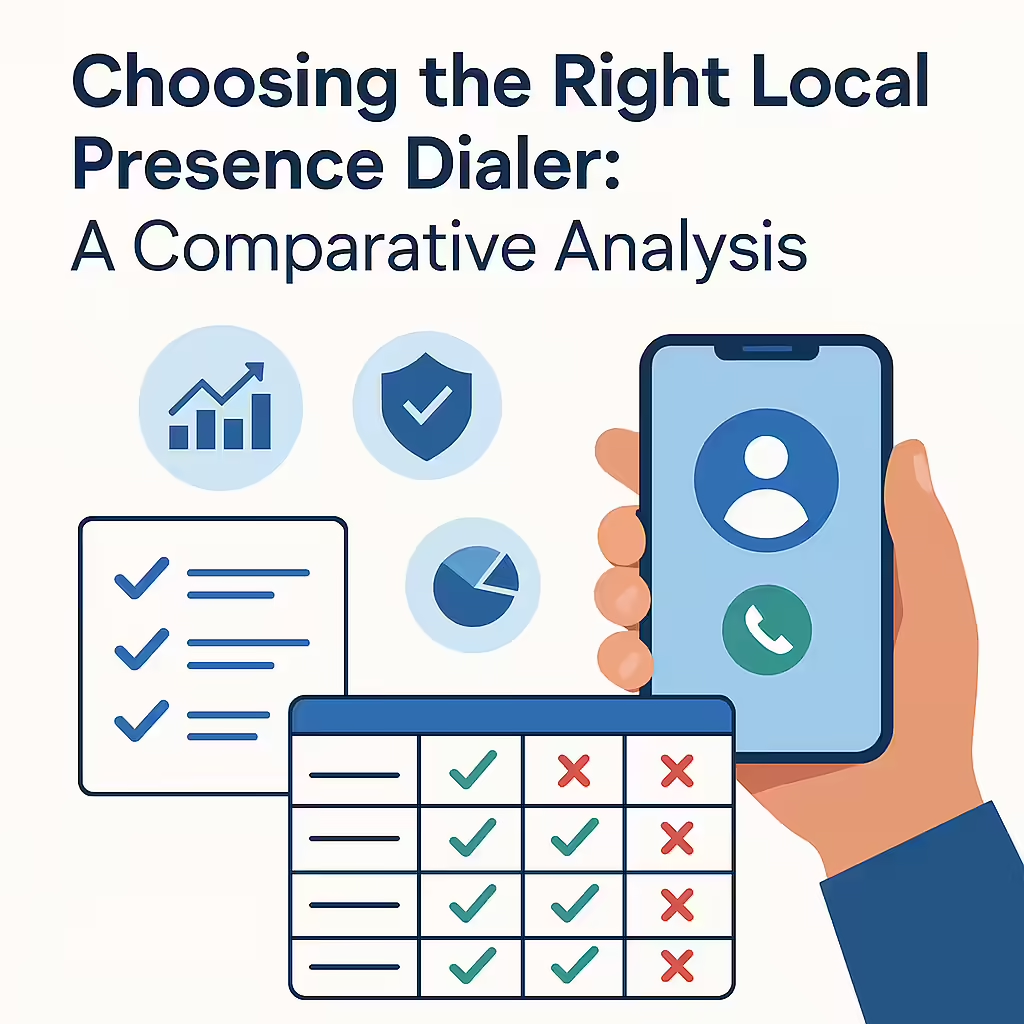TL;DR: In today’s challenging sales landscape, securing an answer to your cold calls is tougher than ever. Local presence dialing, pioneered by advanced systems like Kixie ConnectionBoost™, overcomes this by dynamically displaying a local number on caller ID. This foundational strategy drastically increases connection rates, improving sales efficiency and market penetration, all while maintaining strict compliance.
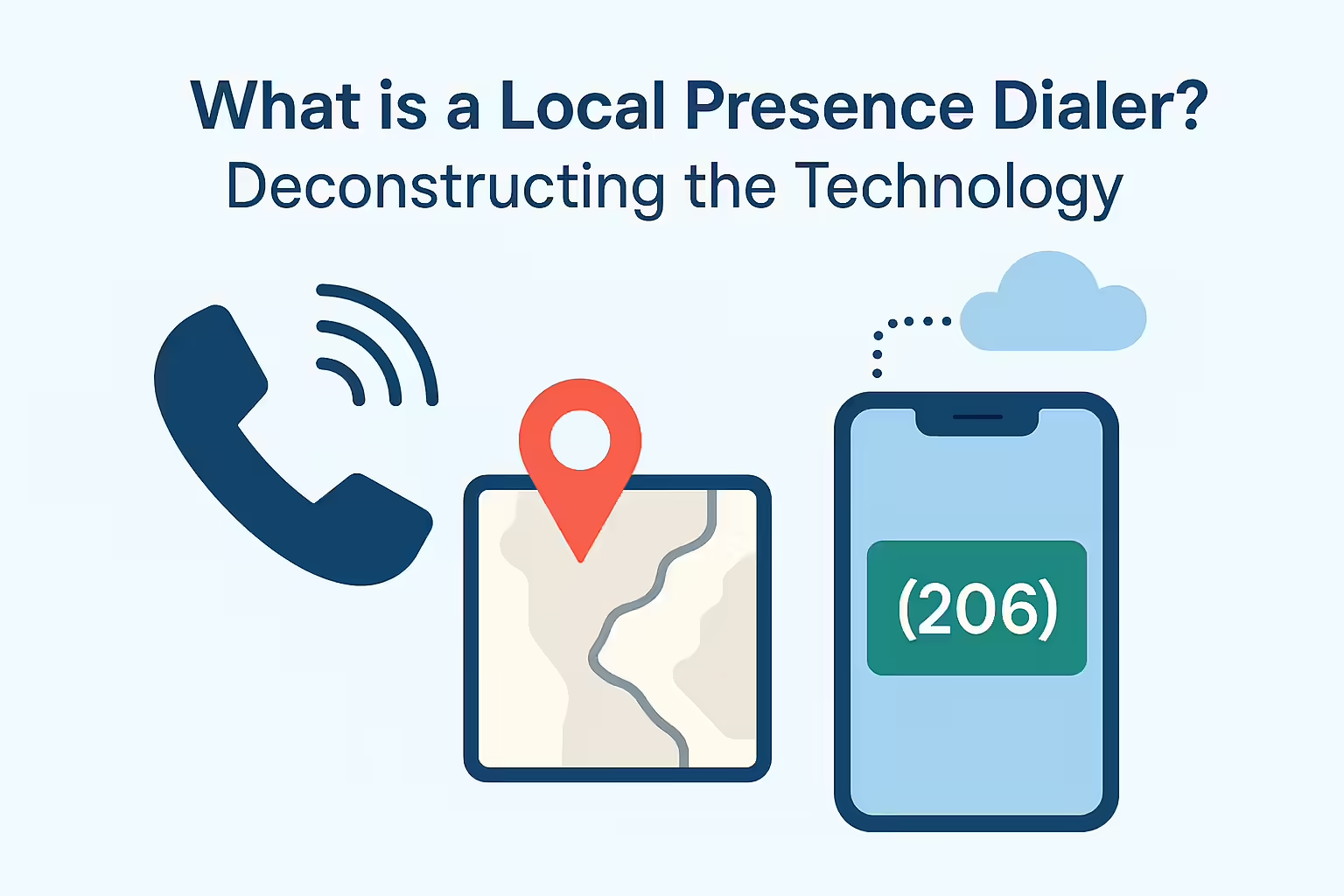
What is a Local Presence Dialer? Deconstructing the Technology
At its core, a local presence dialer is a feature within a Voice over IP (VoIP) phone system. It dynamically and automatically assigns a local area code to a sales team’s outbound calls. This ensures the number displayed on the recipient’s caller ID matches their geographic location. This process occurs in real-time, regardless of the sales representative’s actual physical location. For instance, a rep in Orlando calling a prospect in Seattle would display a Seattle area code, creating an immediate impression of a local call.How It Works: The Mechanics Behind the Magic
The seamless functionality of a local presence dialer is powered by a sophisticated, yet straightforward, technological process. This process operates in the background of every call, allowing sales teams to scale outreach without adding manual steps or complexity for the individual representative.- Step 1: Number Provisioning: The foundation is a robust inventory of legitimate phone numbers. The sales organization acquires or leases a pool of real phone numbers from its VoIP provider. These cover various area codes and regions they intend to target. This ensures all outbound calls originate from valid, callable numbers.
- Step 2: Geolocation Detection: When a sales representative initiates a call, the software instantly analyzes the prospect’s phone number to identify its area code and, by extension, its geographic location.
- Step 3: Dynamic Caller ID Matching: In a fraction of a second, the system selects an appropriate number from its provisioned pool. This number matches the prospect’s area code. It is then temporarily assigned as the outbound caller ID for that specific call. This ensures the recipient sees a familiar, local number.
The Critical Distinction: Local Presence vs. Illegal Spoofing
It is imperative to address the primary legal and ethical concern: “spoofing.” While local presence dialing alters caller ID, it differs fundamentally from illegal caller ID spoofing. The defining line combines intent and number ownership. Legitimate local presence dialing uses real, owned, or leased numbers that can be called back. Its intent is to increase connection rates by establishing familiarity and trust. Illegal spoofing uses fake or unauthorized numbers with intent to defraud or deceive. This malicious intent is what federal legislation, such as the Truth in Caller ID Act, prohibits. Understanding this distinction is crucial for compliance. Partnering with a provider that guarantees legitimate, traceable numbers mitigates legal risk and protects brand reputation. Any provider unable to verify number sourcing should be viewed as a liability. The table below provides a clear comparison for vetting solutions.| Aspect | Local Presence Dialing | Illegal Caller ID Spoofing |
|---|---|---|
| Legal Status | Legal and ethical business practice when compliant. | Illegal when done with intent to defraud or cause harm. |
| Number Ownership | Uses legitimate numbers owned or leased from VoIP provider. | Often uses fake, unauthorized, or non-existent numbers. |
| Business Purpose | Increases call answer rates for legitimate communication. | Deceives, scams, or defrauds by impersonating. |
| Consumer Trust | Aims to build trust by appearing local. | Destroys consumer trust and leads to call avoidance. |
| Regulatory Oversight | Subject to FCC and TCPA regulations. | Prohibited by Truth in Caller ID Act, significant penalties. |
The Business Case: Why Top-Performing Sales Teams Rely on Local Presence
The widespread adoption of local presence dialing is rooted in human psychology and compelling performance data. The business case extends beyond just getting more calls answered. It impacts team efficiency, market scalability, and the fundamental economics of outbound sales.The Psychology of the Pickup: Tapping into Human Nature
A local number’s effectiveness is a direct result of predictable cognitive shortcuts. These shortcuts influence human behavior.- Familiarity Bias: People naturally prefer things they recognize. A call from a familiar area code feels safer and more relevant. This sense of familiarity dramatically lowers the instinctive barrier to answering.
- Threat Reduction: In an era of rampant robocalls, toll-free and out-of-state numbers are often red flags. They are associated with unsolicited calls or potential fraud. A local number bypasses this mental filter, giving reps a crucial window for conversation.
The Data-Backed Benefits: Quantifying the Impact
These psychological advantages translate directly into measurable improvements in key sales metrics. Prospects are up to 400% more likely to answer a call from a local number.X This can be transformative for outbound teams. Case studies support this, with companies like Infinity by Marvin reporting a 400% increase in appointment setting. Local numbers also build instant credibility and trust, fostering subconscious rapport. This perceived proximity makes the caller seem more credible and less intrusive, leading to more productive conversations. This boost in connection rates dramatically increases operational efficiency. Representatives spend less time listening to dial tones and leaving voicemails, and more time having meaningful conversations. This efficiency leads to higher quota attainment. For growth, local presence offers a scalable, cost-effective way to enter new markets. A centralized sales team can establish a virtual presence anywhere without physical office costs or local hiring. This enables rapid testing and penetration of new territories with minimal upfront investment.A Nuanced Look at the Data: Addressing the Orum Contradiction
For a truly authoritative analysis, we must examine data that challenges this narrative. A 2021 study by Orum, analyzing over 1.5 million calls, suggested local presence had no meaningful positive impact on connection rates (4.6% local vs. 5.5% non-local). This apparent contradiction does not invalidate local presence, but reframes it. The effectiveness is not constant; it is influenced by data quality, audience behavior, and technology sophistication. Orum itself suggests reasons for its findings:- Outdated Area Codes: Many people, especially with mobile phones, keep their original cell numbers after moving. A 2016 Pew Research Center study found 10% of U.S. adults use an out-of-state area code. In these cases, a “local” call is, in fact, non-local and potentially irrelevant.
- Business Context: For prospects in national or global industries, a local number may carry less weight. They might prioritize calls from major business hubs.
Staying Compliant: Navigating the Legal and Reputational Landscape
Leveraging a local presence dialer requires both technological implementation and a steadfast commitment to legal compliance. Sales leaders must navigate this landscape to mitigate risk, ensure long-term deliverability, and protect company reputation.The Truth in Caller ID Act
The primary federal legislation is the Truth in Caller ID Act. Its core tenet: prohibits transmitting misleading or inaccurate caller ID information with intent to defraud, cause harm, or wrongfully obtain value. The key phrase is “with the intent.” Legitimate local presence dialing, by reputable providers, does not meet this malicious intent threshold. It uses real, callable phone numbers for the commercial purpose of increasing connection rates. The goal is legitimate business conversation, not nefarious deception. Some providers, like PhoneBurner, require proof of operational presence in each state for local number display. This commitment to compliance ensures local presence remains a legal and ethical sales tool.Telephone Consumer Protection Act (TCPA) Essentials
Using a local presence dialer does not exempt teams from TCPA requirements. Adherence to its core provisions is crucial to avoid significant financial penalties. Key considerations include:- Do-Not-Call (DNC) Lists: Scrub all outbound calling lists against the National Do-Not-Call Registry. Companies must maintain internal DNC lists and honor all opt-out requests promptly.
- Calling Time Restrictions: Telemarketing calls are restricted between 8:00 a.m. and 9:00 p.m. in the recipient’s local time zone. The sales team is responsible for scheduling campaigns within these legal windows.
- Consent: TCPA has specific rules on consent, especially for automatic telephone dialing systems (ATDS). Work with legal counsel to implement appropriate consent protocols, such as “prior express written consent,” for campaigns.
The Reputation Arms Race: Beyond Legal Compliance
While adhering to the law is the baseline, it no longer guarantees call deliverability. The modern challenge is a real-time “reputation arms race.” This fight is against sophisticated spam-detection algorithms from carriers (Verizon, AT&T) and third-party call-blocking apps. High volumes of outbound calls from a single number, even a legitimate local one, are a primary trigger. If a number makes hundreds of calls daily, many unanswered, it can be flagged as “Spam Likely.” Once reputation is damaged, connection rates plummet, neutralizing local presence benefits. This impacts provider selection. A modern dialer requires a robust, proactive caller ID reputation management system. Simply providing a static pool of local numbers is reactive and outdated. Critical, mission-essential features for high-volume teams include:- Continuous Monitoring: Actively tracking the “health” and answer rates of every number in the pool.
- Intelligent Rotation: Automatically rotating numbers to distribute call volume, preventing overuse of any single caller ID.
- Proactive Replacement: Immediately retiring any number flagged as spam and replacing it with a clean, reputable number.
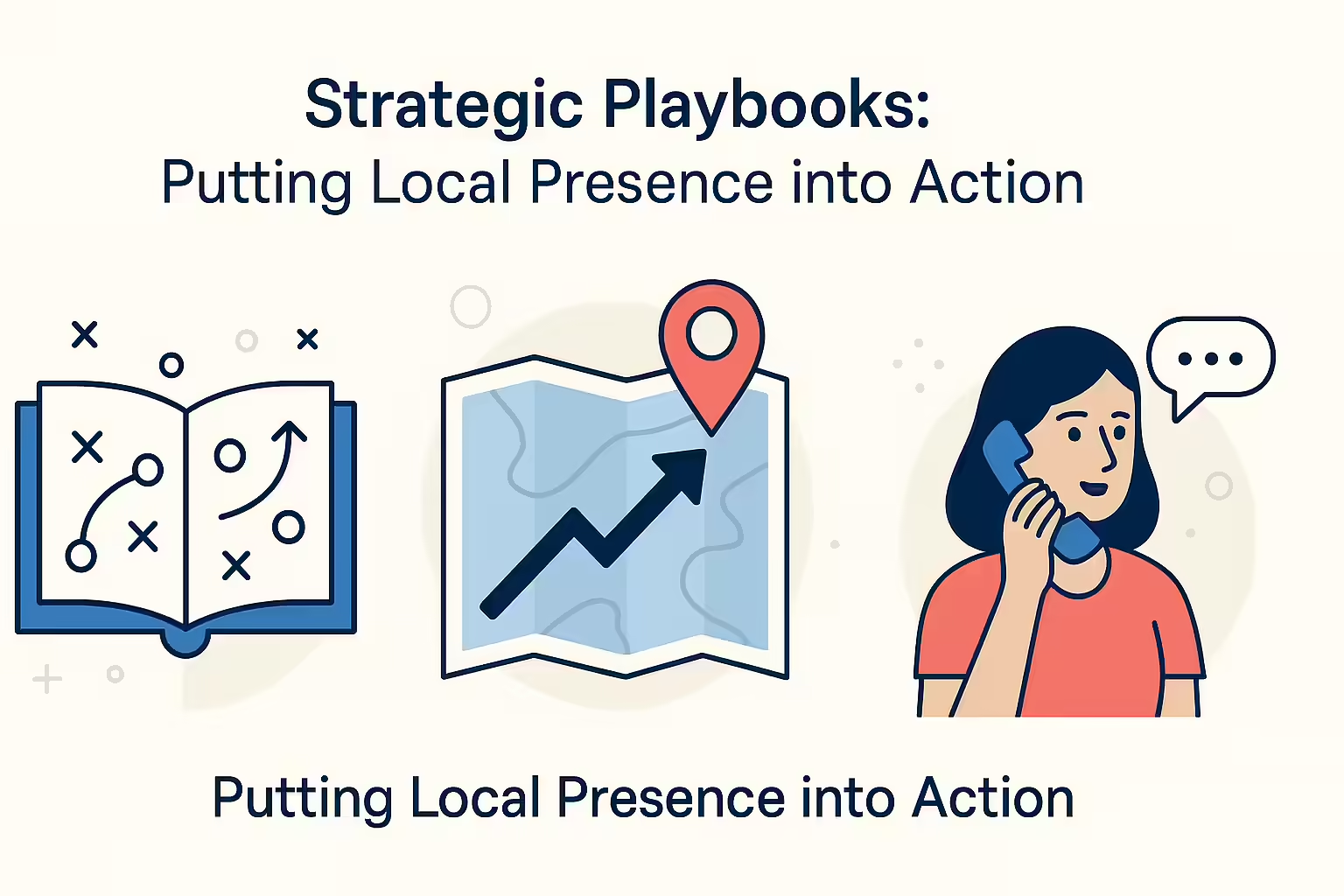
Strategic Playbooks: Putting Local Presence into Action
Deploying a local presence dialer effectively requires a strategic framework. The following playbooks provide actionable steps to leverage this technology. We focus on two high-impact scenarios: entering new markets and re-engaging unresponsive leads.Prospecting New Territories & Establishing a Virtual Foothold
Objective: Penetrate new geographic markets rapidly and cost-effectively. Establish an immediate local presence to maximize initial connection rates.- Step 1: Market Identification & Number Acquisition: Define target cities or regions. Work with your VoIP provider to acquire a sufficient pool of local numbers for each area code. For high-volume calling, aim for at least one number for every 50-100 daily calls into a specific area code, enabling proper rotation.
- Step 2: CRM Integration & List Segmentation: Ensure the dialer integrates deeply with your CRM. Segment prospect lists geographically (state, city, area code) for precise, automated local number matching for each campaign.
- Step 3: Scripting with Local Context: While never misrepresenting physical location, enhance rapport with subtle local context. Example: “Good morning, I was reviewing the business landscape in the Denver area and came across your company…” This shows preparation and reinforces the local connection.
- Step 4: Launch, Analyze, and Optimize: Execute campaigns, tracking performance meticulously within the dialer’s analytics dashboard. Monitor answer rates, conversation duration, and conversion rates by region. This data reveals receptive markets and guides resource allocation to high-potential territories.
Re-Engaging Cold & Dormant Leads
Objective: Break through communication barriers with unresponsive leads. Restart stalled sales conversations ignored after standard outreach (emails, voicemails).- Step 1: Lead Segmentation: Use your CRM to identify “cold” leads (e.g., no engagement for over 60 days). Segment them by geographic location and, if possible, their last meaningful engagement (e.g., “ghosted after demo,” “unresponsive after proposal”).
- Step 2: The Pattern Interrupt Call: Cold leads learn to ignore prior attempts. A local presence call is a powerful “pattern interrupt.” A familiar local area code is far more likely to pique curiosity and get an answer than the same out-of-state number they have ignored for weeks.
- Step 3: The Value-First Re-Engagement Script: The goal isn’t to re-pitch, but to re-engage with new, relevant value. The script should acknowledge the time lapse, reference past interaction, and provide a compelling reason to reconnect. Example: “Hi [Name], this is [Your Name] from [Company] calling on a recorded line. We spoke a couple of months back about improving your team’s [pain point]. I’m reaching out because I saw your company just announced [recent trigger event], and it made me think of you. I have an idea that might be relevant. Is now a terrible time for a 30-second question?”
- Step 4: Multi-Channel Integration: The local presence call should be a key touchpoint in a broader, multi-channel re-engagement sequence. This includes personalized emails and strategic LinkedIn interactions, surrounding the prospect with value-driven communication.
When Not to Use Local Presence: The Importance of Strategic Restraint
Expert tool use involves knowing when not to use it. While powerful for initial outreach, local presence dialing can be counterproductive in certain situations.- Expected Calls: For anticipated calls, like a scheduled demo, use the company’s main, consistent business number. Displaying a random local number can cause confusion.
- Established Relationships: With existing customers or late-stage opportunities, consistency builds trust. Switching to an unfamiliar local number can erode rapport.
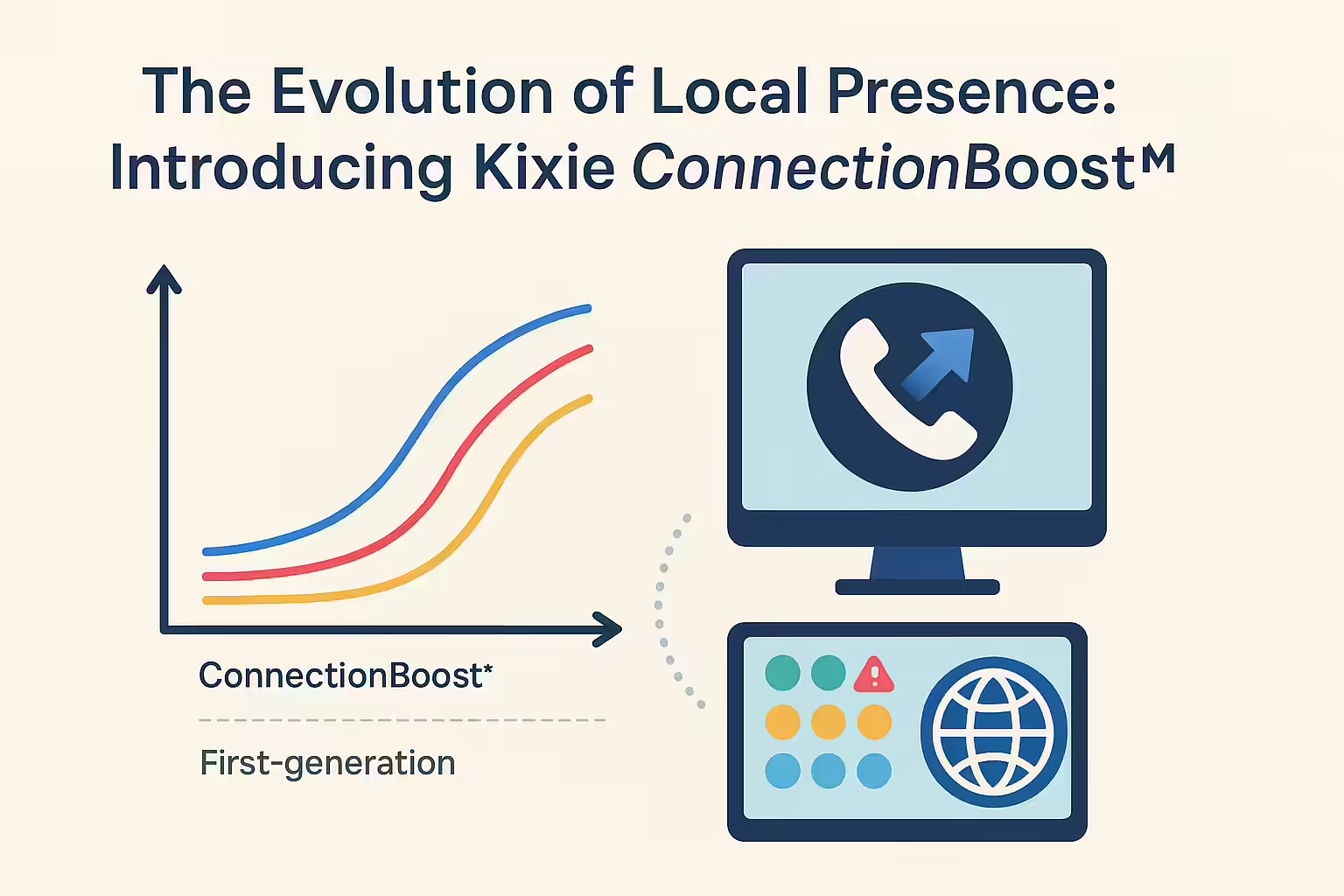
The Evolution of Local Presence: Introducing Kixie ConnectionBoost™
Challenges discussed previously—nunumber reputationurnout, static area code matching, and poor callback experience—highlight shortcomings of first-generation local presence systems. The modern sales environment demands a more intelligent, adaptive, and robust solution. This is the next evolution of technology, embodied by systems like Kixie’s ConnectionBoost™.Beyond Standard Local Presence: The Limitations of First-Generation Systems
Basic local presence dialers simply match the prospect’s area code. As established, this approach is vulnerable to critical failure points:- Number Burnout and Spam Flagging: Without active management, static pool numbers quickly become overused. This causes them to be flagged as spam by carriers, rendering them ineffective.
- Ineffective Geographic Matching: For prospect lists with outdated or non-local mobile numbers, simple area code matching can be irrelevant. It fails to boost connection rates.
- Disjointed Customer Experience: Without intelligent callback routing, a returned call leads to frustrating experiences. This destroys any trust the local number may have built.
How Kixie Delivers More Connections with an Intelligent System
Kixie’s ConnectionBoost™ is an AI-powered engine designed to solve these advanced challenges. It moves beyond simple matching to deliver a comprehensive connection and reputation management platform.- AI-Powered Global Local Presence: Kixie’s system transcends basic geographic matching. Its AI continuously analyzes real-time answer rates for every number in its vast pool. This includes over 50 numbers for every area code in the US and Canada, plus numbers for dozens of international countries. The system dynamically rotates numbers, prioritizing the highest-performing, most reputable caller IDs. This performance-based selection directly addresses the variability issues found in studies like Orum’s.
- Progressive Caller ID: A unique and powerful feature, Progressive Caller ID ensures representatives attempting to reach the same prospect multiple times will display a different local number each time. This sophisticated approach prevents prospects from associating a specific number with a sales call. It dramatically increases connection probability on follow-up attempts.
- Automated Spam Detection & Remediation: Kixie offers a proactive solution to the “Reputation Arms Race.” The ConnectionBoost™ engine actively monitors the health and reputation of all numbers in its network. If a number shows drops in performance or gets flagged, it’s automatically retired and replaced with a clean, high-performing number. This fully managed service shields clients from complexities of caller ID reputation and ensures consistent high deliverability.
- Seamless CRM Integration & Workflow Automation: An advanced dialer’s power is magnified by integration with core systems. Kixie provides deep, bi-directional, native integrations with industry-leading CRMs. This includes HubSpot, Salesforce, Zoho, HighLevel, and 25+ others. Every call, text, and outcome is automatically logged, eliminating manual entry and ensuring perfect data hygiene. Local presence dialing can also be triggered automatically within CRM workflows for sophisticated, multi-channel outreach.
Choosing the Right Local Presence Dialer: A Comparative Analysis
Selecting a local presence dialer today requires evaluating solutions beyond a simple feature checklist. Sales leaders must assess a solution’s ability to solve complex, real-world challenges. These challenges include call deliverability, reputation management, and seamless workflow integration. A modern dialer should be judged on its intelligence and automation in maximizing meaningful connections, not just area code matching. The following table compares leading local presence dialer solutions on the critical criteria identified in this guide.| Feature | Kixie (ConnectionBoost™) | Koncert | PhoneBurner | Ringover |
|---|---|---|---|---|
| Number Selection Method | AI-powered, performance-based rotation from 50+ numbers per area code. | Automated area code matching from a managed database. | Automatic matching from user-purchased inventory. | “Nearest Number” selects matching area code. |
| Spam & Reputation Mgmt. | Automated, continuous spam detection and immediate replacement of flagged numbers. | Proactive “Heat Map” monitors number usage. | ARMOR® add-on for spam flag protection/remediation. | Does not specify automated spam management. |
| Progressive Caller ID | Yes. Displays different local number on subsequent calls to avoid screening. | No. Not mentioned as a feature. | No. Not mentioned as a feature. | No. Not mentioned as a feature. |
| Dynamic Callback Routing | Yes. Returned calls automatically routed to original representative. | Not specified, but focuses on low-latency connections. | Yes. Routes callbacks to correct representative. | Yes. Recommends IVR to route to last connected agent. |
| International Coverage | Extensive. AI-powered local presence for dozens of countries. | Not specified as primary feature (US-based B2B focus). | Primarily US market; requires business presence proof. | Offers local numbers in various countries; may require proof. |
| Key CRM Integrations | Deep, native integrations with HubSpot, Salesforce, Zoho, HighLevel, 25+ others. | Seamless integrations with Salesforce and HubSpot. | Integrates with major CRMs (Salesforce, HubSpot). | Integrates with various CRMs and business tools. |
Conclusion: Make Every Call Count
In the competitive modern sales landscape, local presence dialing has evolved into an indispensable strategic tool. However, this analysis clearly shows that not all solutions are created equal. The era of simple area code matching is over, rendered insufficient by sophisticated carrier spam filtering and increasingly skeptical prospects. The future of effective outbound sales outreach belongs to intelligent, AI-driven systems. These next-generation platforms do not merely present a local number; they actively manage its reputation, optimize its performance based on real-time data, and integrate seamlessly into the complex workflows that power high-performing sales teams. This evolution marks a shift from a static tool to a dynamic service—one that proactively protects a company’s ability to connect with its target market. For sales leaders, the objective is clear: stop allowing unanswered calls to dictate your team’s success. It is time to adopt a technology that ensures every dial has the maximum possible chance of becoming a meaningful conversation. Key Takeaways:- Local presence dialing boosts call answer rates.
- Distinguish legitimate local presence from illegal spoofing.
- Compliance with TCPA and Caller ID Act is critical.
- Active spam and reputation management is now essential.
- Intelligent, AI-powered systems outperform basic dialers.
- Kixie ConnectionBoost™ offers advanced, integrated solutions.
Ready to boost your connection rates and drive more conversations?
Start your Kixie free trial here and experience the future of outbound sales!


